How to pick the best cello?
Buying a cello can indeed be an intimidating process, and many see this hobby as an expensive one. But because cellos come in a wide variety of models, types, and price ranges, this isn’t necessarily true.
To pick the best cello, you need to start with a budget. Low-priced models may often be enough for those who have never played this kind of instrument and are not quite sure they are going to stick with it. Average-priced cellos, such as Waful Acoustic Cello, are a suitable choice for those who are serious about playing, while high-end models should only be purchased by performers, professionals, and experienced players.
When shopping for a cello, you need to look closely at the materials it is made from. Quality cellos are hand-carved out of maple and spruce, and they are also glued together properly. These are two factors that are essential for the quality of sound. Fingerboards and pegs should be made from rosewood or ebony, and the overall build-quality is essential. Next, you’ll need to make sure you are picking a cello in the right size. Don’t forget to pay attention to the accessories your new instrument comes with.
Cello size
Cellos are made in multiple sizes and the most common of them are 4/4 (full size), 3/4, 1/2, and 1/4 sizes. The full-sized cello is often a good choice for adults, even though many beginners prefer to start with a smaller instrument so they can handle it easier while they learn.
When choosing the size of the cello, you should take into account multiple factors, including the height of the player and the distance between the left hand’s tip of the index finger and that of the pinky. Another measurement to consider is the distance from the shoulder to the tip of the middle finger of the left hand. If you don’t have all these measurements, you can also use the age of the child you’re buying the instrument for. Kids ages 5 to 7 would do well with a 1/4 cello, those between the ages 7 to 11 can pay a 1/2 cello, while 3/4 cellos work well for kids aged 11 to 15. Children over 15 and adults can play on a full-sized cello.
Materials
The quality of the materials a cello is made from impacts both its price and the sound you can obtain when you play it. The top part of the instrument should be made from spruce wood and the sides, back, and neck should be from maple wood. The fingerboards and pegs are generally made from ebony, even in lower priced models. Our editor’s choice, the Cecilio 4/4 CECO-1BK, is made from a selection of hand carved maple wood and ebony for quality sound and a polished design.
Laminate cellos also exist, but they are best to be avoided if possible. They simply don’t have the ability to produce high-quality sound like their spruce or maple counterparts. To spot a cello made from laminate, look at the finish. If it appears to have layers instead of being made from a single piece, it’s most likely laminate.
Carbon fiber cellos are another good choice, but are not perfect for beginners looking to purchase their first instrument. They are an ideal choice for users who want to play in the outdoors on a regular basis, because this type of material is not easily affected by humidity and changes and temperature.
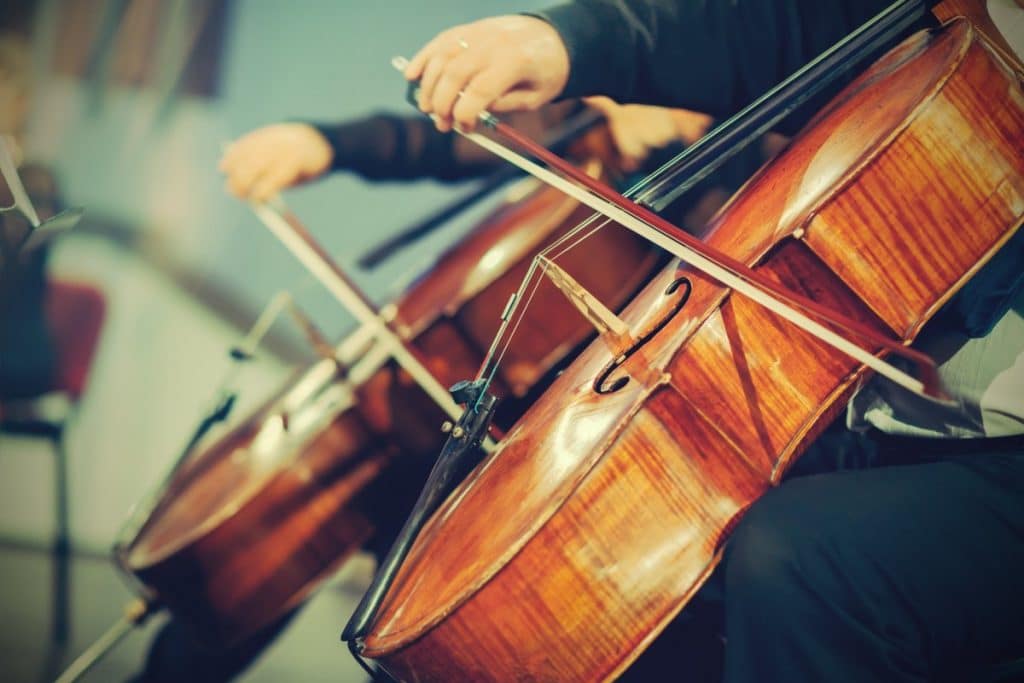 Weight
Weight
Many traditional cellos are on the heavy side, weighing approximately 20 lbs. While they are a good choice for serious players, they may not work so well for children or adults who want a lightweight instrument to easily take to practice. Enter lightweight cellos such as the NS Design NXT4ACOSB, which weigh less than 5 lbs. for increased portability. These cellos are easy to pack and transport, and because they are compact, they make an ideal choice of an instrument for those who don’t have enough room in their home for a full-sized instrument.
Bow
Perhaps the most important accessory of a cello, the bow is often a separate purchase, but it may some together with the instrument as part of a kit as well. The quality of the bow is just as important as that of the cello, and a rule of thumb in the world of musicians says that its price tag should be between 20% to 25% of the total cost of the cello. While you may take this with a grain of salt, it’s still important to go for a high-quality bow to be able to obtain the best sound.
Most of the premium bows for cellos are made from wood, with Brazilwood being a very common choice among manufacturers. These bows are generally quite expensive, but you may also choose from synthetic models, such as those made from carbon fiber and fiberglass. No matter which type you choose, you need to make sure the bow feels balanced in your hand and allows you to play different techniques and styles.
Strings
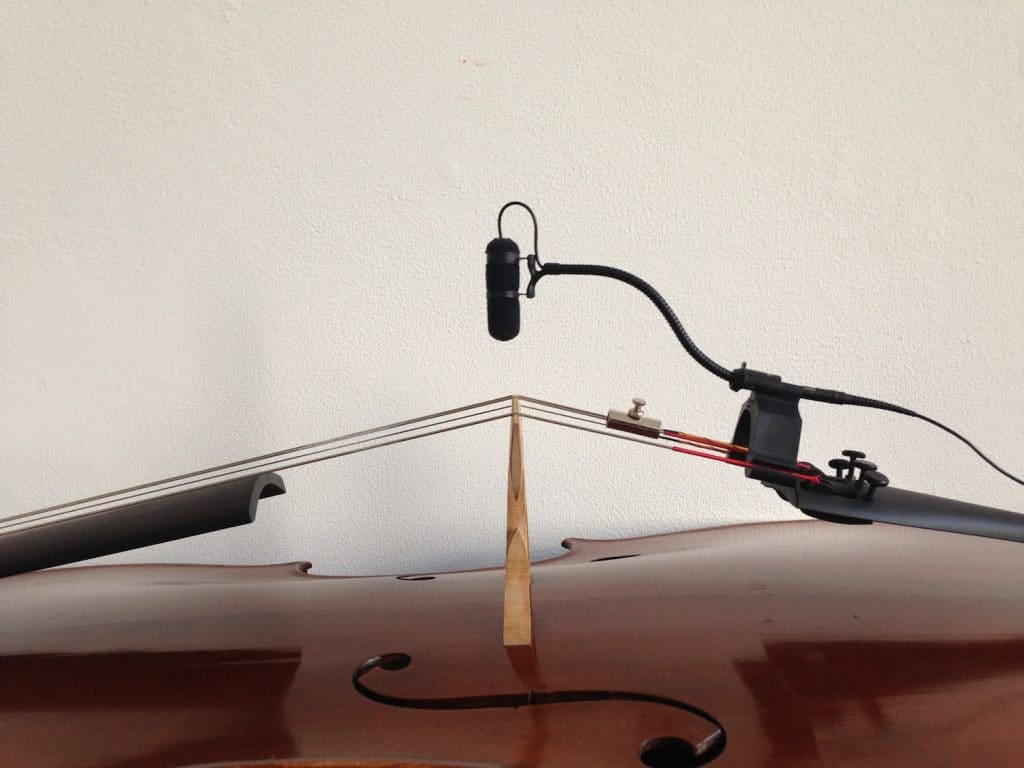 Another vital element to consider for your cello are strings. Just like in the case of the bow, you should do your best to purchase high-quality strings, as they have a significant impact on the quality of the sound. Some of the most popular brands of strings for cellos are Larsen, Evah Pirazzi, and Thomastik-Infeld. Many professional cello players use a combination of brands depending on the type of string they require at a given time. Strings need to be replaced on a regular basis, somewhere between six months to a year if you play every day.
Another vital element to consider for your cello are strings. Just like in the case of the bow, you should do your best to purchase high-quality strings, as they have a significant impact on the quality of the sound. Some of the most popular brands of strings for cellos are Larsen, Evah Pirazzi, and Thomastik-Infeld. Many professional cello players use a combination of brands depending on the type of string they require at a given time. Strings need to be replaced on a regular basis, somewhere between six months to a year if you play every day.
Rosin
A quality rosin can completely change the way your cello sounds, just like a poorly made one can ruin the sound. The Rosin is a resin that makes the hairs of your bow sticky, which is essential to create friction for the strings to vibrate. Different types of rosins exist, with medium strength being a very popular choice that allows players to get a deep sound. If you ever find that the sound your cello makes is too week, the rosin is most probably the culprit.
Carrying case
Carrying cases are a good thing to have around because they allow you to store and transport your instrument while protecting it from scratches and other damage. A padded bag usually has enough room for various accessories as well, such as extra strings, for example.
Extra features
 Many of the cellos we reviewed come with a bow and case, but there are plenty of other accessories that you may need for your instrument. These include a cello stand so you can play more comfortable, a tuner to keep your instrument in tune easily, and music books or sheet music. Many cellos are available in a selection of colors, so you can get the one that suits your personality best, like it is offered by Lykos Acoustic Cello. Other features you might want to look into are shoulder straps, which can make playing a lot more comfortable.
Many of the cellos we reviewed come with a bow and case, but there are plenty of other accessories that you may need for your instrument. These include a cello stand so you can play more comfortable, a tuner to keep your instrument in tune easily, and music books or sheet music. Many cellos are available in a selection of colors, so you can get the one that suits your personality best, like it is offered by Lykos Acoustic Cello. Other features you might want to look into are shoulder straps, which can make playing a lot more comfortable.
Acoustic cello vs. electric cello
The debate between acoustic and electric cellos is an old and long one, but the main difference between the two types is the kind of music you are interested in playing.
Acoustic cellos are the standard when it comes to classical/orchestral music, but they work just as well in modern music. Electric cellos, on the other hand, are considerably cheaper and less likely to get damaged because they are easier to get around. They are less responsive than acoustic models, though they are the best choice if you want to work with amplifiers.
Prices
Cellos are instruments that come in a wide range of prices, with acoustic models going for $2,000 to $5,000. Lower priced models are available for those who want to learn to play the cello without breaking the bank. New players can choose from models that cost a couple of hundred dollars, which deliver deep sounds and have a high-quality build. Kits are also available, and many of the models we reviewed come with all the accessories you might need to get started, offering good value for money.






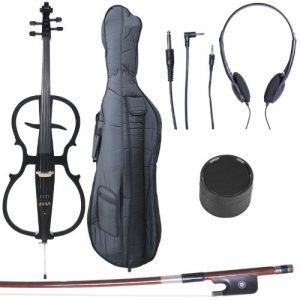
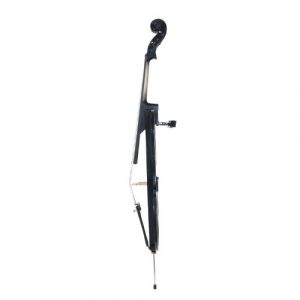
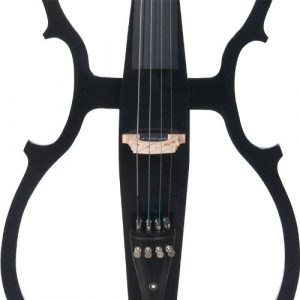
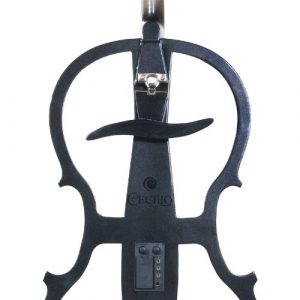

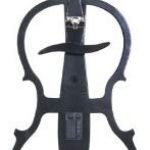

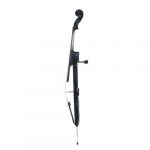

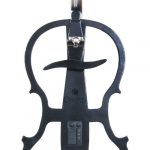
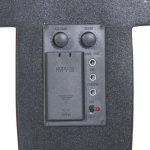
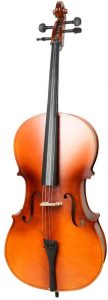
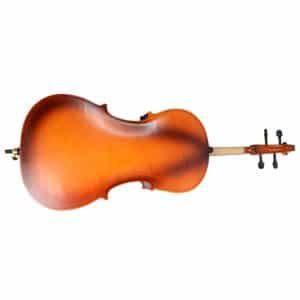
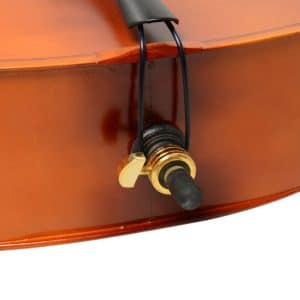

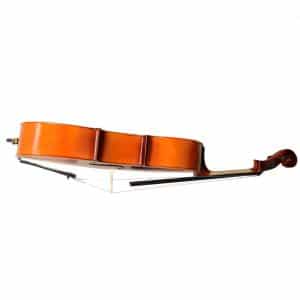

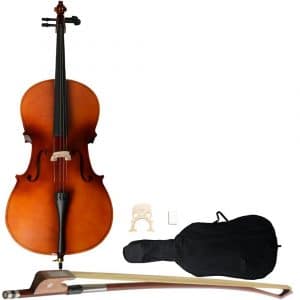
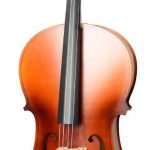
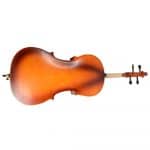
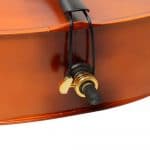
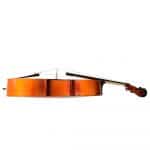
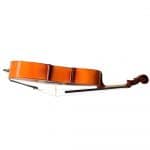
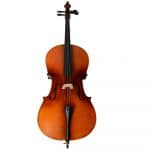
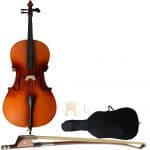

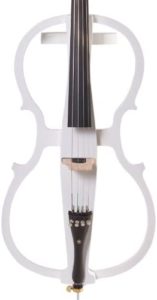
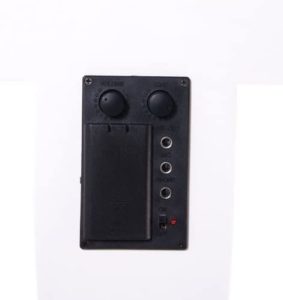

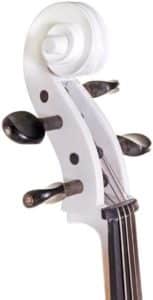
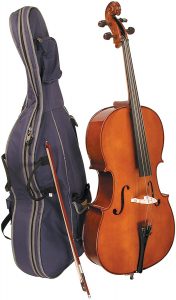
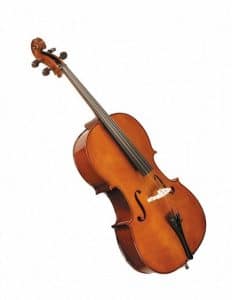
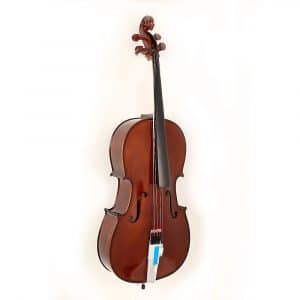
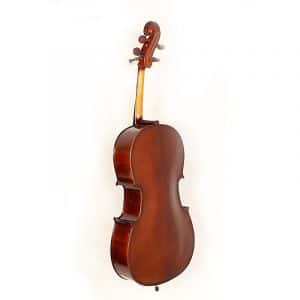
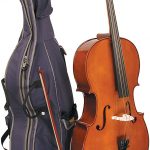
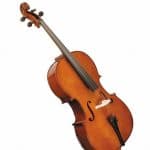

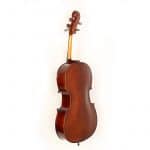



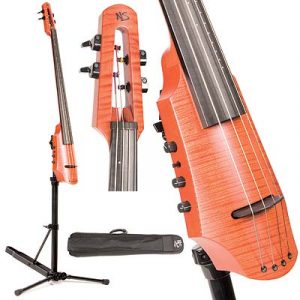

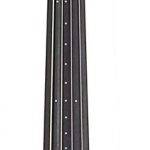
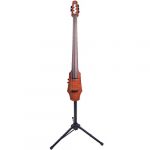
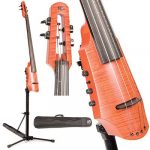

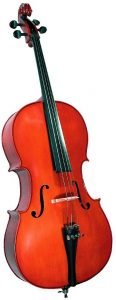
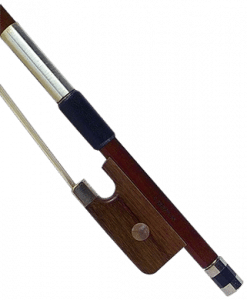

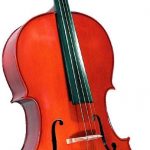
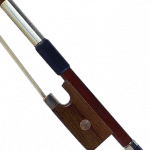
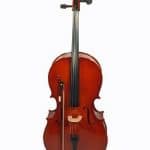
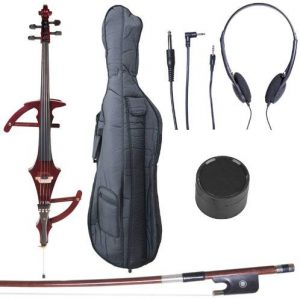
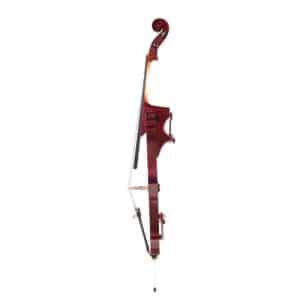
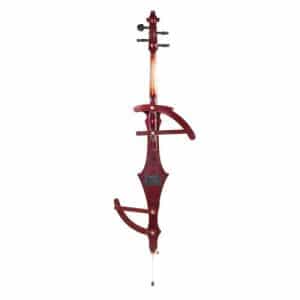

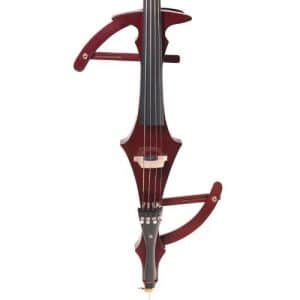
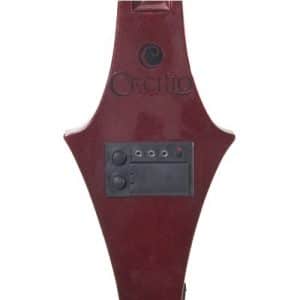

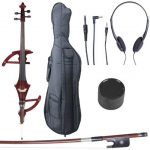
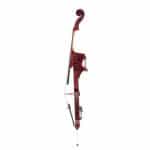
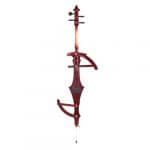
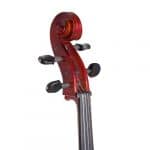
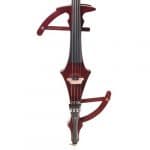
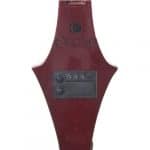
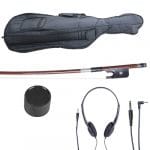
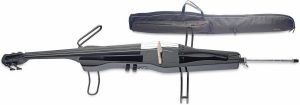
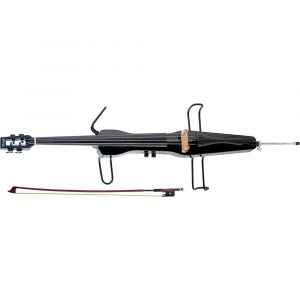

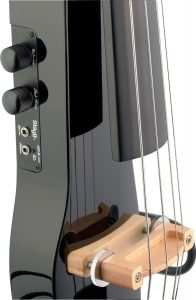
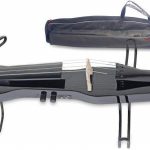

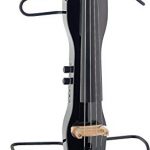
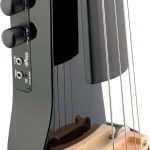

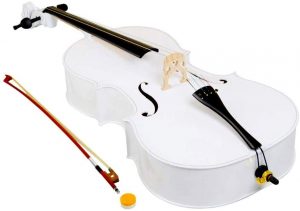
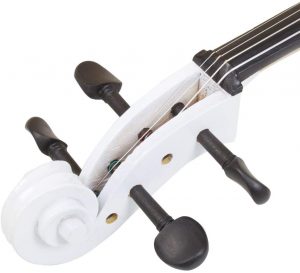

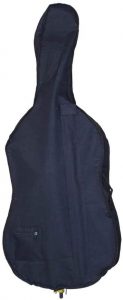
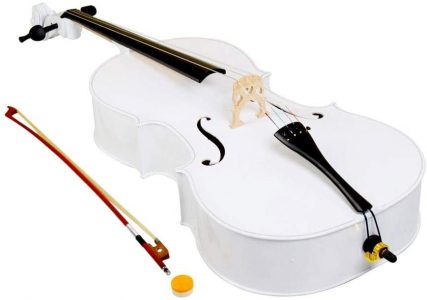
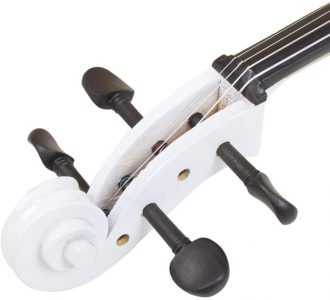
 Weight
Weight Another vital element to consider for your cello are strings. Just like in the case of the bow, you should do your best to purchase high-quality strings, as they have a significant impact on the quality of the sound. Some of the most popular brands of strings for cellos are Larsen, Evah Pirazzi, and Thomastik-Infeld. Many professional cello players use a combination of brands depending on the type of string they require at a given time. Strings need to be replaced on a regular basis, somewhere between six months to a year if you play every day.
Another vital element to consider for your cello are strings. Just like in the case of the bow, you should do your best to purchase high-quality strings, as they have a significant impact on the quality of the sound. Some of the most popular brands of strings for cellos are Larsen, Evah Pirazzi, and Thomastik-Infeld. Many professional cello players use a combination of brands depending on the type of string they require at a given time. Strings need to be replaced on a regular basis, somewhere between six months to a year if you play every day. Many of the cellos we reviewed come with a bow and case, but there are plenty of other accessories that you may need for your instrument. These include a cello stand so you can play more comfortable, a tuner to keep your instrument in tune easily, and music books or sheet music. Many cellos are available in a selection of colors, so you can get the one that suits your personality best, like it is offered by
Many of the cellos we reviewed come with a bow and case, but there are plenty of other accessories that you may need for your instrument. These include a cello stand so you can play more comfortable, a tuner to keep your instrument in tune easily, and music books or sheet music. Many cellos are available in a selection of colors, so you can get the one that suits your personality best, like it is offered by 









